OPINION: Debate over subtitles turns a blind eye to low-vision viewers
Photo by Richard Shotwell/Invision/AP
Bong Joon-ho holds the Oscars for best original screenplay, best international feature film, best directing, and best picture for “Parasite” at the Governors Ball after the Oscars on Sunday, Feb. 9, 2020, at the Dolby Theatre in Los Angeles.
Bong Joon-ho made history last year as “Parasite” was crowned the first South Korean film to win the Oscar for Best Picture, declaring that “Once you overcome the 1-inch-tall barrier of subtitles, you will be introduced to so many more amazing films.”
Bong’s now-famous comment has inspired even more conversation online about what many see as an American reluctance to watch foreign films with subtitles — whether it be because of laziness, illiteracy, blatant racism or some mixture of the three.
But his remark and the debate it sparked have stuck with me for much different reasons. For some people, that barrier is not simply something that can be overcome.
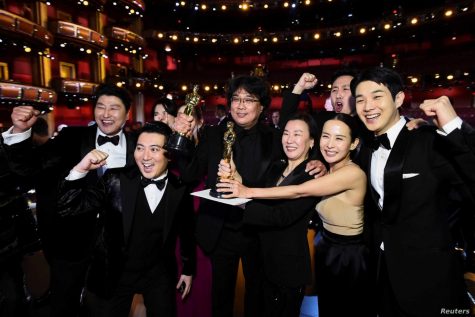
I’ve been reading restaurant menus aloud for as long as I can remember. I read out text messages if there aren’t a pair of glasses in reach. When the show suddenly introduces characters who don’t speak English, my head snaps up from my phone and I read the subtitles as fast as I can, making sure not to miss anything. If it’s not me, it’s my brother, who reads in a deep monotone with much less energy and inflection than I. So it’s usually me for all of our sakes.
This is just the way it’s always been to make sure my mom is in the loop.
At just 13 she got her first pair of glasses and at 22 she was diagnosed with Stargardt’s, a rare genetic degenerative eye disease. In the decades since, her vision has gradually gotten worse. When asked what she sees, it’s usually some version of the same thing: Imagine when you look at a bright light for too long and then look away, those fuzzy dots in your vision that are left is what she sees all the time.
It doesn’t impact her as much as you’d think when you hear the term “legally blind” but there are some things she just can’t do — like read subtitles. That 1-inch barrier might as well be 100 feet tall for her because no matter what, it can’t be overcome.
For her and the nearly 8 million other people in America with a visual disability, subtitles join a long list of things in life that just aren’t accessible.
So what is our family’s solution? To not watch films or television shows with subtitles. Simple as that.
Importantly, this has nothing to do with our willingness to experience other cultures. My mom spent a good part of her childhood in Japan — trust me, that isn’t the issue. The issue is that subtitles simply aren’t accessible to low-vision people.
Just a few days ago, I asked my mom about what it would look like if she were to watch a film like “Parasite.” If I was there, I’d be reading every single line of dialogue to her. If I wasn’t, she’d be standing directly in front of the screen, pausing with each new frame so she could take the time to read the small print. Then, instead of whatever she was supposed to get out of the film, she’d walk away with a screaming headache and regret for even trying in the first place.
So she avoided all of that unpleasantness and simply didn’t watch the movie. And guess what? She’s not racist, illiterate or lazy. She just can’t see.
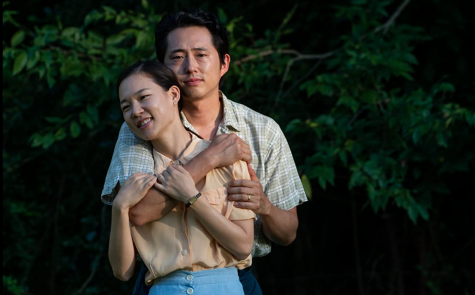
In the past year many people have argued that “Parasite” and this year’s Korean-language film “Minari” are required viewing and those who don’t watch them are simply ignorant. But tell me, is that film going to resonate at all in the same way if it becomes a grueling task to simply watch?
Thomas O’Bryan, 26, is a self-proclaimed film buff living in Memphis, Tennessee who also has Stargardt’s. While he can’t read the subtitles, O’Bryan has watched a great deal of foreign films, especially throughout his time in school. Instead of struggling to read the small type, O’Bryan simply ignores the words entirely and infers what’s happening based on the context of the action on screen. When he wants to watch something with heavy dialogue like anime, he prefers the dubbed version.
“Watching foreign films is not something I generally do but it’s not something I’ve never done,” O’Bryan said.
When O’Bryan and his mom went to see the 2019 film “The Farewell” in theaters, they were both unaware that a large portion of the film is in Mandarin. Luckily, O’Bryan said, they were in an empty enough theater that his mom could narrate what was happening for him.
When people are reading subtitles out to him, O’Bryan said, “it’s not much different than listening to an audiobook. The only difference there is there’s also pictures on the screen to go with it.”

And while it’s not what some people would say is the “right” way to watch foreign media, O’Bryan said that “It doesn’t necessarily diminish the experience of the film, it just is something that has to be done.”
For others with Stargardt’s, like Kelly Hatfield, this movie theater inconvenience is far too familiar.
Hatfield, who is 42 and lives in Lexington, South Carolina, relies, like many others, on the eyes of close friends and family to fill in the details that have been lost to Stargardt’s. More often than not it’s a nonissue but sometimes it comes with its own unique set of drawbacks.
“I have some good friends who are really good about reading the subtitles for me if there aren’t many, but the looks they get when they do that for me and the looks we get in the theater, it’s embarrassing,” Hatfield said. “It makes you feel very self-conscious and it makes me feel limited in what I can be exposed to theatrically because I’m not able to participate fully.”
Another thing Hatfield has noticed is the growing use of text messages in films and television shows. In the past, she said, some older shows would hold up something written and the audience was expected to read it to understand what was going on. The same is true today for text messages on-screen and Hatfield, like others with low vision, are left completely out of the loop.
“They do make accommodations for other disabilities,” Hatfield said. “But I don’t feel like low vision is one that they really strive to accommodate.”
The most common accessibility tool for film and television for the blind is known as Audio Description where all aspects of the media are narrated to the audience. While this works incredibly well for individuals with total vision loss, those with Stargardt’s and similar diseases can for the most part still see the overall picture, making the narration a distracting addition.
“I think we’re in a tough spot in that we have functional vision but we just can’t see detail,” Hatfield said. “It’s like we’re not blind enough for that but we’re too blind for normal.”
For most low-vision people, subtitles aren’t even close to the top of the list when it comes to the everyday inconveniences caused by their disability. In a lot of ways, the ignorance of the general public about low vision is often one of the most prevalent side effects of their condition.
Whether this means flippant use of the term blind or offhand comments suggesting getting a stronger glasses prescription, interactions like these are commonplace for people like Denise Schweizer from Evansville, Indiana. Diagnosed with Stargardt’s at 10, Schweizer has been navigating a life of low vision for 48 years. Still, she said, there is a lot of ignorance about blindness.
I love subtitles as much as the next weeb nerd, and I loved “Parasite”, but the blind and visually impaired are also movie-goers and the quickness to throw dubbing of movies into other languages as being for people who aren’t trying hard enough is gross.
— Ingrid (@Ingrid_Blythe) February 10, 2020
“It’s not that they’re nasty people, they’re just not informed and oblivious to that it’s a real thing — that you can see but not see,” Schweizer said.
As for the subtitle debate that often minimizes this issue to an American reluctance to foreign films, Schweizer said, “You’re not considering my needs as an individual and you’re being more narrow-minded than I am by skipping something that I will get no entertainment out of.”
This ignorance about the wide range of experiences under the umbrella term “blindness” is one of the biggest obstacles in the way of low vision education and advocacy. As a result, Ileana Havrilla, 39, has spent a large part of her professional career as a nurse educating her counterparts in the healthcare industry.
“It’s not as prevalent as people that are totally blind,” said Havrilla, who was diagnosed with Stargardt’s 16 years ago. “And I think people who think people that have low vision are the elderly with age-related macular degeneration as opposed to young people. So I think people think ‘Well you’re young and look healthy,’ and as true as that may be, I still have a problem.”
In addition to the everyday tasks that prove difficult for the visually impaired, the pandemic restrictions have also presented a new problem for low-vision people like Shelly Weber, 56, from Dover, Delaware. After stores and restaurants began reopening, most put up some type of guidelines on the door or at the front of the building. For people like Weber, those signs may as well not be there at all.
“It’s frustrating to me because I have enough vision to function but I don’t have enough vision to truly function,” Weber said.
People will jump to help those with a cane or a seeing-eye dog, but when it comes to someone with functional vision there just isn’t the same willingness to help, Weber said.
“I don’t think people understand that even though most blind people are so functional because we can hear and take direction that we do need help.”



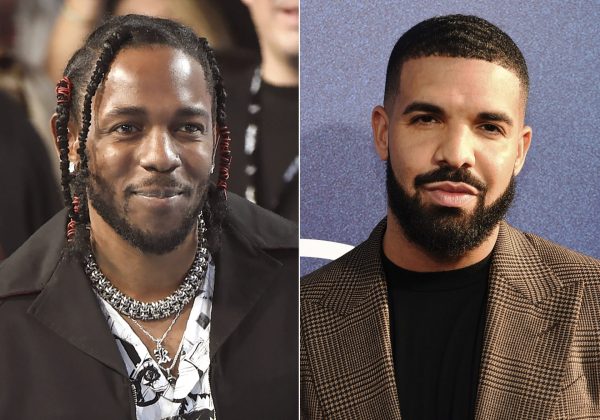
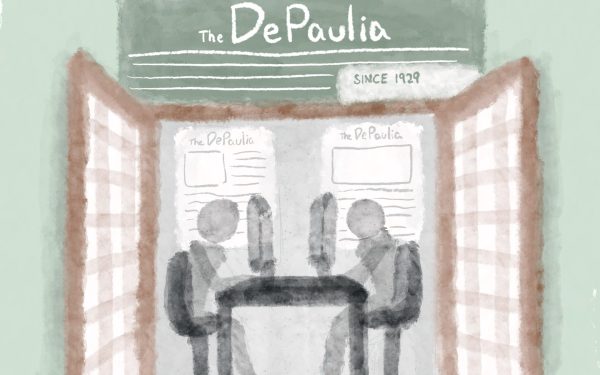
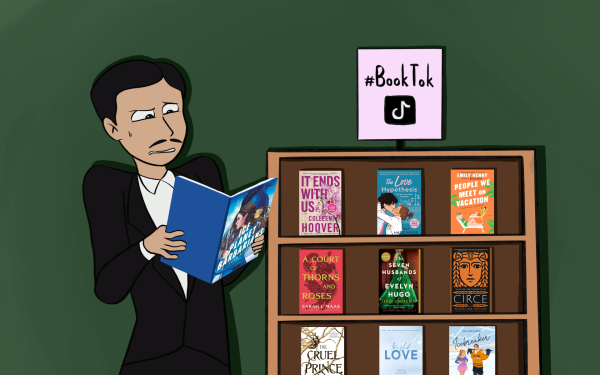








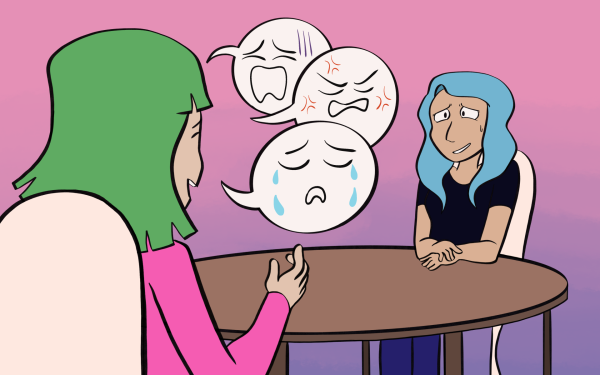



Tansy Alexander • Mar 4, 2021 at 5:25 pm
Great points made! Especially the willingness to dub films into other languages, but leave subtitles instead on English CC’d /subtitled projects.. Certainly leaves many low and no vision consumers literally in the dark!